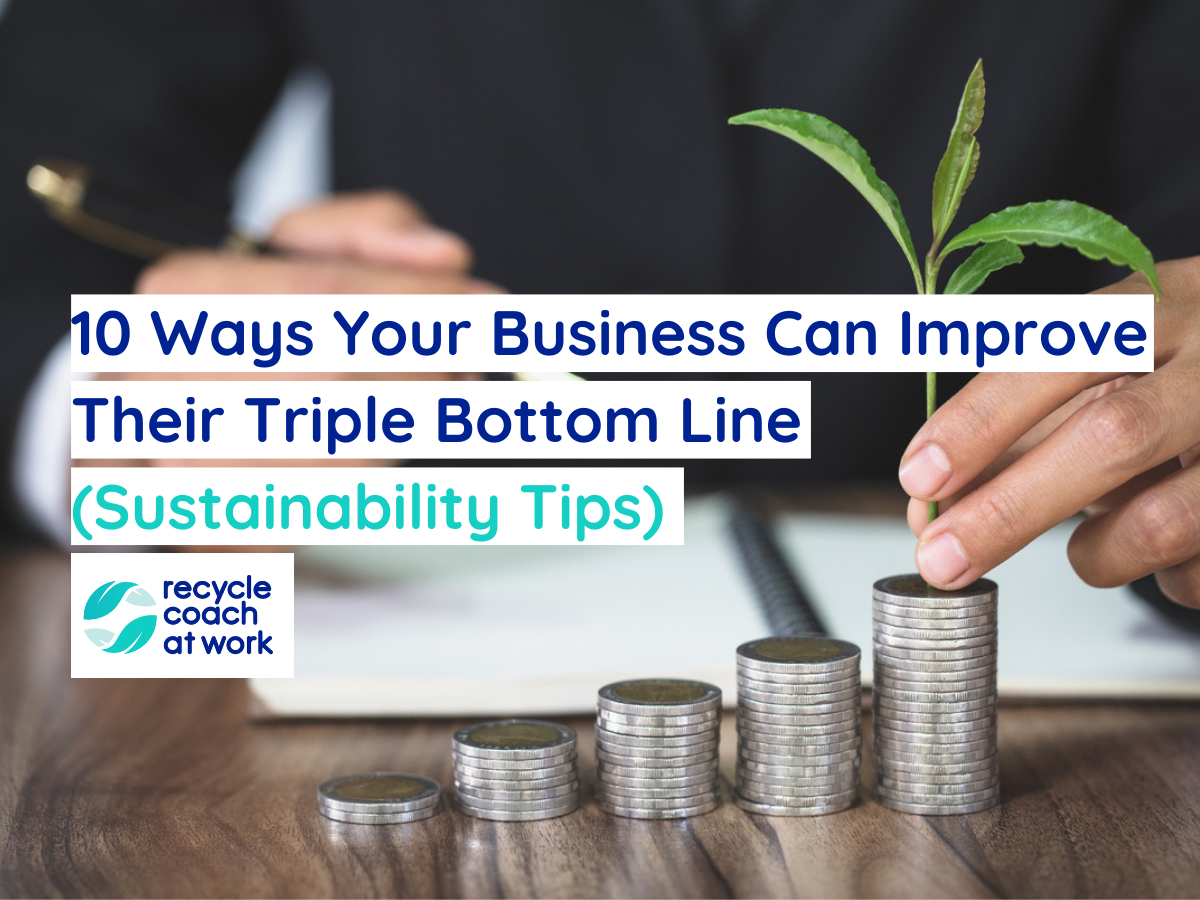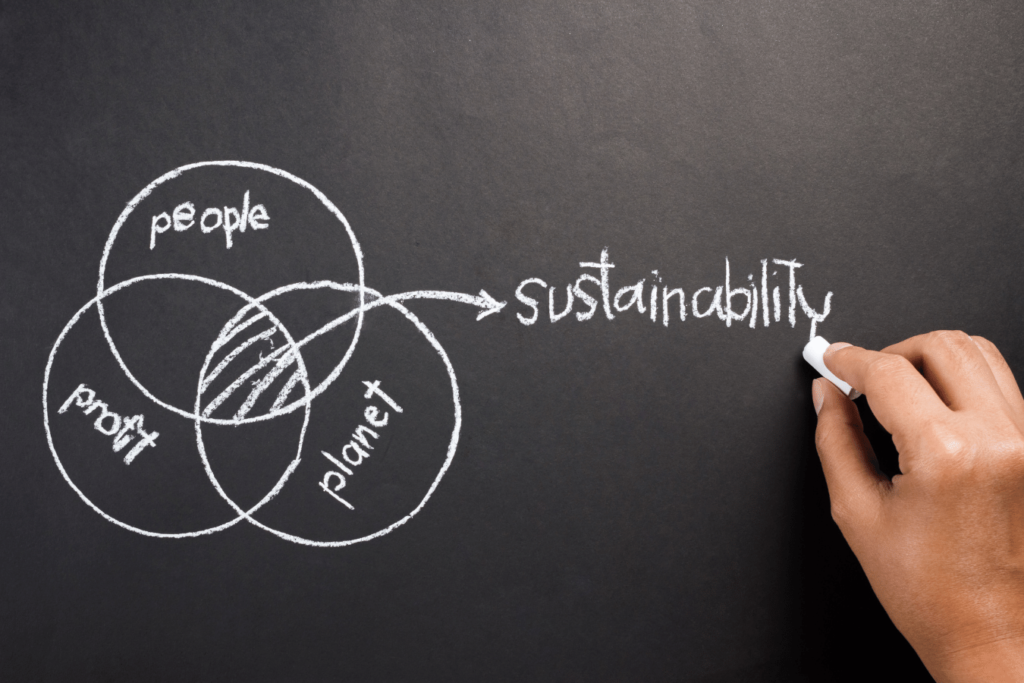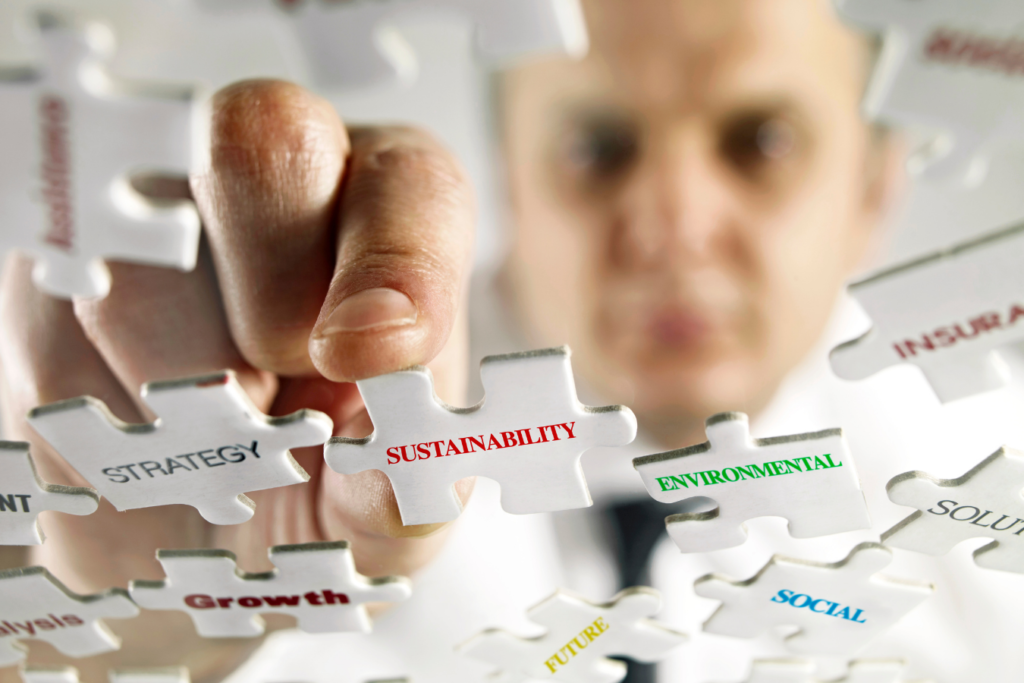10 Ways Your Business Can Improve Their Triple Bottom Line (Sustainability Tips)

Are you part of a business that keeps track of their sustainability by considering their triple bottom line? If not, you might want to be part of the change that can keep businesses on track to becoming more sustainable. We have some tips to help you get there!
What is triple bottom line?

A term coined by John Elkington, the triple bottom line (TBL) refers to the concept of creating a business strategy that equally values not only profit, but also people, and the planet. While the bottom line for any company is profit, the triple bottom line adds a value system to the idea of a successful business that ensures business sustainability.
The three P’s of a triple bottom line bring forth a way of looking at companies holistically. These socially conscious companies maintain that their business has a positive impact as part of their corporate social responsibility.
This not only includes considering all people involved in a business, from the employees, workers in the supply chain, customers, or anyone else that connects to the company in some way, but also the many ways their business will impact the environment.
A company that is successfully reaching their TBL will be able to measure their profitability, social responsibility, and environmental impact.
What are the advantages of having a sustainable business?

Bringing sustainability into the forefront of your business plan can have many positive effects. Thinking about more than just profit can lead to examining often overlooked effects from a business starting with the day-to-day office management, all the way down the supply chain. Making sustainable business practices the norm from top to bottom can bring many advantages to a company. Here are a few of those benefits:
- Impacts Positive Environmental Change– For a business to focus on renewable energy, preventing pollution, reducing carbon emissions, etc., they are protecting aspects of their business that put stress on the environment.
- Boosts the Company’s Reputation– If a company goes above and beyond to improve their social and environmental impact, the public will notice. Having a business model that includes sustainability can increase the amount of positive attention a company will get and the amount of respect they attain.
- Attracts Customers– With the aforementioned increase in attention, a company that profits people and the planet will attract new, long-lasting customers. We are entering a stage in consumer culture that puts value on how a company does business and what the full cost of buying from them really is.
- Improves Staff Retention– In a time where the great resignation has employees leave in droves, it is becoming evident that employees want more out of their job than a paycheck. 37% of employees resigning say they are looking for more ethical and eco-conscious companies.
- Fosters Innovation– When a company looks to increase their sustainability efforts, they don’t want it to cut into their financial performance. Trying to be more eco-friendly without cutting into profits can cultivate innovative solutions that will improve the entire triple bottom line.
What are the challenges of measuring the triple bottom line?

Calculating the success of a company has traditionally consisted of simply the profit and loss. With the TBL concept, taking into account the financial, social, and environmental success can be much more difficult to calculate.
To calculate social and environmental impacts, the targets may be a little more subjective. Many companies lack the resources to measure such nuanced aspects of the triple bottom line. For this reason, many companies seek out other organizations to measure their TBL performance.
Now, companies can seek out B Corp certification that can measure their social and environmental impact, while providing certification for the company. This can highlight to your business partners, clients, and customers that you are working towards sustainability in your business.
The most unified standard of sustainability can be measured through the fully outlined Sustainable Development Goals provided by the United Nations. These goals are extensive and cover every topic in the discussion about sustainability. The UN has defined specific targets and indicators within each of the 17 goals they have delineated.
While these tools are out there for companies to measure, it can still be difficult to gain a clear cut measurement since there is no clear end goal. Part of sustainability is that there will always be improvements being made to better the prosperity, people, and planet.
Making benchmarks for your company can help clarify your goals and identify what should be measured and how it needs to be measured to show sustainability success.
What can your business do to build an environmental sustainably framework?

Using the UN’s Sustainable Development Goals and following B Corp certification guidelines can be a great way to dive into a sustainability framework, but what are some first steps to get the ball rolling?
There are many ways you can start implementing change in your business right away that can have long term effects for the environment.
- Start a Supplementary Recycling Program– Maybe your company already recycles the basics through your local recycling program, but there are other ways to add additional materials to your recycling. Try adding a drop-off battery recycling program through Call2Recycle, an ink and toner recycling program, or a plastic bag and film recycling box to your office, warehouse, or factory.
- Offer Remote Working Options– While there is a push to move back to in-office workplaces, keeping remote work options can significantly reduce your company’s carbon footprint by reducing transportation emissions from your employees.
- Change Your Packaging– If your company uses plastic packaging, see if there could be any alternative packaging options on the market for you. There are more and more plant-based packaging alternatives coming on the market to decrease the risk of plastic pollution.
- Go Paperless– There is rarely a need for paper documents to be passed around nowadays. Storing and sharing your company’s documents digitally can reduce the environmental effects of making paper.
- Promote Reusable Items– Promoting the use of reusable coffee cups and reusable bags with employees, can help with the overuse of single use-paper coffee cups and single-use plastic bags. Both of these items are rarely accepted in normal municipality recycling programs, so avoiding them is always a way to ensure you are doing something good for the environment. If you are usure if your area accepts them, please check with your local program.
- Remove Disposable Items– Instead of keeping disposable cutlery, plates, or containers, have a washable set for employees to use. Plastic waste from single-use items can easily cause plastic pollution to our oceans and takes over 500 years to decompose in landfills.
- Create Green Spaces– Having more plants and green space in your office can improve air quality, and can also make employees feel more relaxed and more productive.
- Offset Your Carbon– If you know it will take some time for your company to lower their overall carbon emissions, in the meantime, you can donate to companies that offset your carbon by enacting positive environmental initiatives.
- Start a Green Team– Get employees and coworkers involved in gaining momentum on your business’s sustainability by forming a green team. With a group of people to bounce ideas off of each other, they are sure to come up with some great ideas for your company’s sustainability efforts.
- Avoid Recycling Contamination– Know what your company allows in it’s recycling is a key component of recycling better at work. When items are added that don’t belong, it can hurt your local recycling program’s efforts. Always check what is allowed in your program before tossing something in the bin. You can also utilize the Recycle Coach At Work mobile tool at your company for a more targeted recycling effort for your business.
The more action your business can take to improve their triple bottom line, the better. Making sure your company is improving on all three P’s of prosperity, people, and planet can have lasting long-term effects that improve your business. Be transparent throughout your process to highlight your goals and improvement measures for your company, clients, and customers, and your triple bottom line will vastly improve over time.